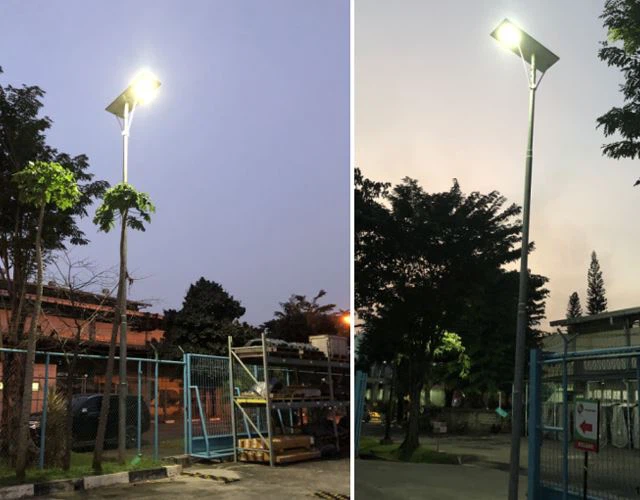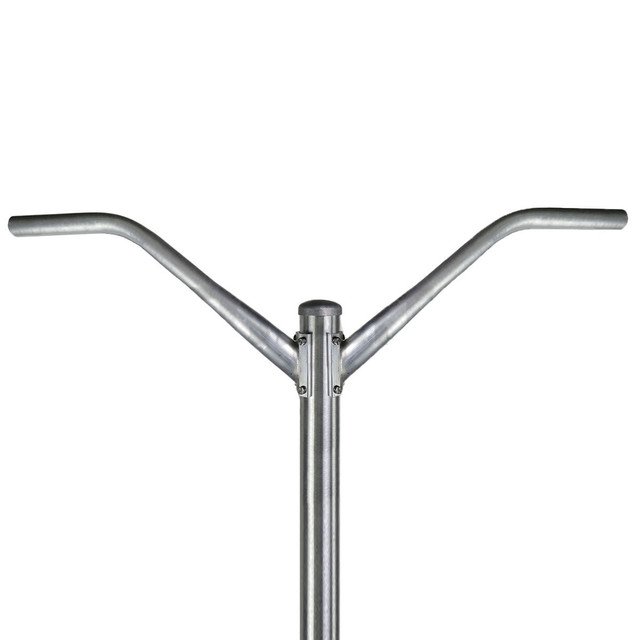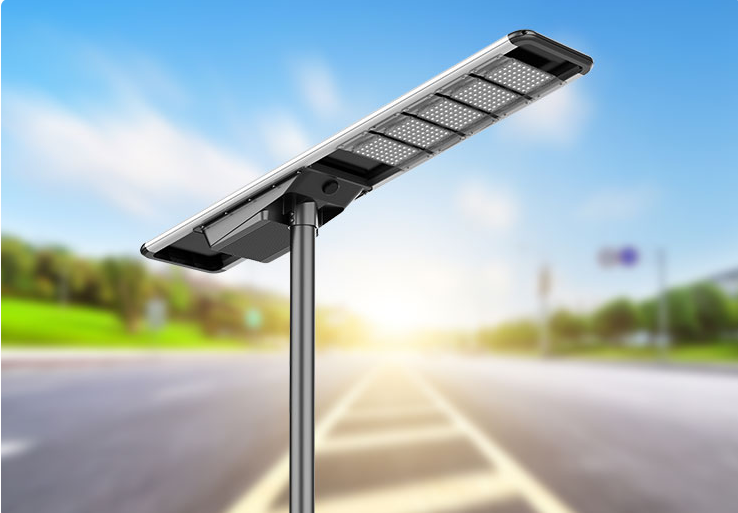My name is Yori Wang, and I often hear misunderstandings about solar street lighting. These myths come from old data or one-off failures. I will clear each myth using technical and financial facts.
Yes, solar street lights are strong enough, cost-effective, bright, low maintenance, and fit modern cities—even in cold spots.
I want you to see why these myths persist, what technology has changed, and how it actually works today.
1. Solar Street Lights Underperform in Cloudy or Cold Weather: False?
Poor light makes people doubt solar lights. Let’s fix that.
Modern solar panels and energy systems work well even with low sun.
Switching from myth to fact is easy once you know the tech.
Dive deeper
I used to believe solar lights only work in desert sun too. But newer panels, often monocrystalline or PERC, actually convert light well at lower levels. They also do better in cooler temps—efficiency even goes up with cold.
MPPT controllers now can adjust voltage to get max output from weak sunlight. So even on cloudy days, they pull out most of the sun energy.
Then, power goes to lithium batteries with smart BMS. These systems balance charge well. They avoid overcharge or deep discharge. That means units can work through several cloudy days.
Here is what typical weather data shows:
| Weather Type | Days Stored | Avg Daily Use | Power Left | Notes |
|---|---|---|---|---|
| 5 cloudy days in a row | 4–6 days | 5–7 hours | ~30% | Enough power |
| Winter short days | 10–12 hrs | Slightly less | ~20% | OK backup |
| Summer peak sun | 14–16 hrs | High discharge | ~10% | Recharges fast |
Studies show systems can cover at least 2–3 cloudy days without sun. In northern Europe, solar lights still work in winter—power reserves and tech improvements help.
Deployments in northern China and high-altitude Peru work fine. The key is pairing high-efficiency PV with smart batteries. I’ve seen sites at 2,300 m altitude with consistent operation even in snow.
My point: Cold, cloudy weather no longer kills solar lighting. It just needs smart design, which most modern systems have.
2. Solar Street Lighting Is More Expensive Than Grid Lighting: Misleading?
Most people only compare purchase price. They skip lifetime costs.
When you include installation, wiring, electricity, and upkeep, solar often costs less over 10 years.
I will walk you through true cost comparison.
Dive deeper
I remember a client in Uganda who complained solar was too pricey. But when we did a TCO calculation, things changed.
Here is a simplified comparison for 100 lights:
| Cost Item | Grid Lighting (USD) | Solar Lighting (USD) |
|---|---|---|
| Unit + Pole | $18,000 | $22,000 |
| Wiring & trench | $15,000 | $0 |
| Network connection fee | $8,000 | $0 |
| Electricity (10 yrs) | $12,000 | $0 |
| Maintenance (10 yrs) | $6,000 | $3,000 |
| Total Cost | $59,000 | $25,000 |
Solar saves more than half over 10 years. Add tax breaks, feed-in tariffs, or climate funding/grants, and solar wins bigger.
Also consider resilience: solar works in grid outages. This adds indirect savings in reduced disruptions, especially for public safety and traffic.
Large public projects often include green loans. These reduce finance costs, boosting solar’s advantage.
My first solar deal in Togo came with a low-interest energy fund. It cut cost by 20%. That's real incentive.
When I present full lifecycle costs, decision-makers stop focusing on price tags and start talking about value.
3. Solar Street Lights Don’t Deliver Sufficient Brightness: Technically Outdated?
Critics say solar lights don’t meet safety standards. That reflects old product designs.
New LED and lens systems meet or exceed road lighting standards for brightness and uniformity.
More control and adaptive light now make solar better than before.
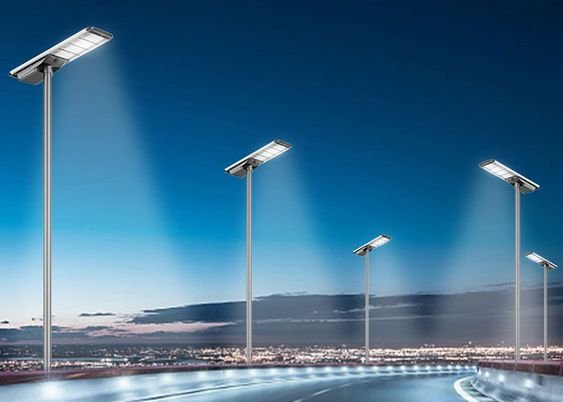
Dive deeper
Older solar lights used low-watt LEDs. That limited brightness, spread, and performance. But now we use 50–150 W high-lumen LEDs, giving 5,000–15,000 lumens each. Lens tech focuses light where needed.
Modern optics deliver uniform lighting across the road, avoid dark spots, and reduce glare.
Smart controls like PIR sensors and dimming adjust output. They run near-full power when people or cars pass, then dim to 20–30%. This saves energy and extends runtime.
Roadway lighting standards—like EN 13201 or IES RP-8—use lux levels and uniformity ratios. Solar lighting can achieve 20 lx average on secondary roads and 50 lx on main roads.
Example table:
| Road Class | Standard Lux | Solar LED Config. | Uniformity Ratio Achieved |
|---|---|---|---|
| Residential (M3) | 20 lx | 60 W LED + lens | 0.4 |
| Secondary (M2) | 30 lx | 80 W LED + sensor dimming | 0.5 |
| Major (M1) | 50 lx | 120 W LED + adaptive mode | 0.6 |
I’ve visited city centers where solar lighting matches power ones. The system dims to 30% when traffic is low, full when busy.
Dimming saves power by ~40%. It also extends the battery life.
Many clients review brightness spec sheets, ask for photometric reports. This gives full confidence.
Solar street lighting is no longer underperforming in brightness. It often beats outdated grid designs.
4. Solar Street Lights Are Unreliable and Require Constant Maintenance: Not Anymore?
People worry solar systems break easily. Old models may have, but modern ones are smarter built.
Modern solar lights are built for reliability with fail-safe parts and low maintenance cycles.
Let me explain the tech and lessons from real use.
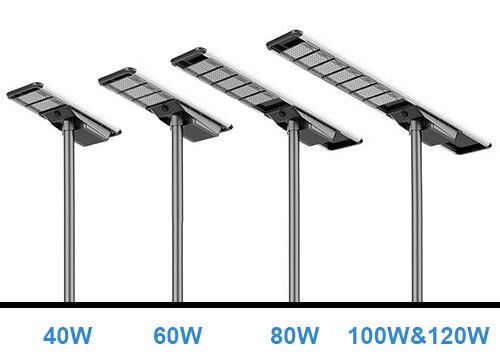
Dive deeper
I worked with local teams who saw solar lights fail after a few months. Most mistakes came from poor installation or mismatched parts.
Now, I insist on integrated all-in-one units. Solar panel, light, battery, controller, all inside a sealed housing. This protects from water, dust, animals, and vandalism.
BMS protects battery from overheating, overcharging, or deep discharge. MPPT controller protects the panel and stores efficiently. LEDs last 50,000–70,000 hours.
Typical warranty: 5 years for li-ion battery, 3 years for LED and electronics. Expected life is 8–10 years.
Common failure points:
- Loose mounting
- Poor grounding
- Wrong tilt angle
Hence we add checklists, torque specs, and installation training.
Example: A project in Ghana had 300 units. We trained installers. Zero failures in 2 years. Clients saved thousands in repair.
We offer maintenance plans:
- Year 1: free inspection
- Year 3: clean optics, check torque
- Year 5: battery health check
No more surprise repairs or weekly visits. Everything is proactive.
Maintenance cycles are predictable. Costs are 0.5–1 % of capital per year. Grid lights cost 1.5–2 %.
Solar reliability is not a myth anymore. It is expected.
5. Solar Street Lighting Is Only for Remote or Off‑Grid Areas: A Narrow View?
Many think solar is only for remote places. That is not true.
Solar street lights now fit cities, campuses, parks, even smart urban plans.
They help with sustainability, reduce grid load, and add independent control.

Dive deeper
I lead a project in a commercial park near Kampala. They wanted clean energy. We installed solar lights along walkways, playgrounds, parking. The result: zero electricity use, smart phone control for brightness schedules, and eco-friendly image.
Also, cities pursue green building certifications. Solar lighting helps them earn credits (like LEED, EDGE, or BREEAM).
Here’s a simple comparison:
| Use Case | Solar Fit? | Benefit |
|---|---|---|
| Rural road | ✅ | Off‑grid, cheap setup |
| Urban street | ✅ | Savings, smart control |
| Park/walkway | ✅ | No trenching, flexible placement |
| Historic district | ✅ | Minimal disruption, aesthetics |
| Temporary sites | ✅ | Instant installation, rental control |
I’ve seen cases where solar lighting is rented for events. This avoids permits for grid hook‑ups, cabling, or generators.
Smart solar lights integrate with IoT sensors—traffic, air, or noise monitors. These become part of smart city networks.
Even city centers can add more light where grid limit or cable capacity is low. They run solar fixtures until upgrades arrive.
Solar suits more than remote zones. It now runs alongside modern infrastructure goals.
Conclusion
Old myths come from outdated tech or half truths. Today, solar street lighting is efficient, affordable, bright, low-maintenance, and fits cities too. Evaluate choices by real needs, data, and lifecycle cost—not old bias.


